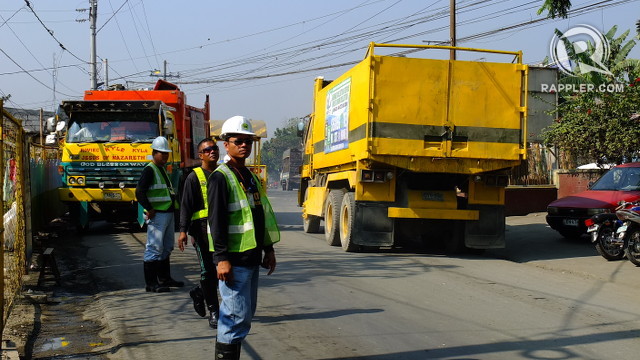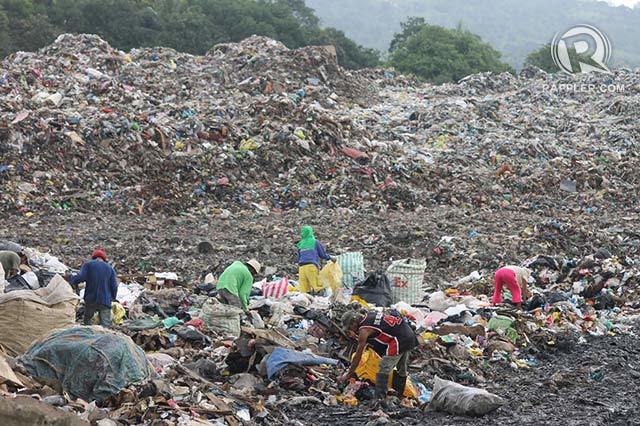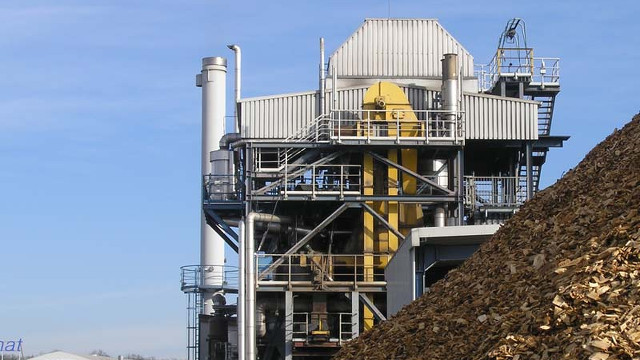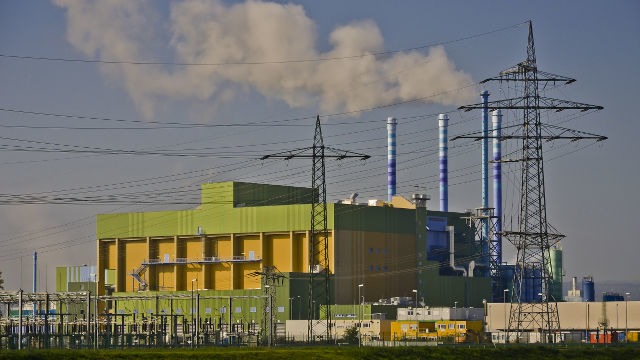China, Indonesia, the Philippines, Thailand, and Vietnam are responsible for more than half of all plastic waste in the ocean

PLASTIC TIDE. A rubbish collector gathers floating plastic garbage in Manila Bay. Photo by EPA/Ritchie B. Tongo
MANILA, Philippines – China and 4 Southeast Asian
countries – Indonesia, the Philippines, Thailand, and Vietnam – are
responsible for more than half of all plastic waste that ends up in the
world’s oceans.
A new study suggests 5 ways these 5 countries can significantly reduce their plastic leakage in the next 20 years.
The study by international group Ocean Conservancy, entitled “Stemming the Tide,”
says that coordinated action in just these 5 countries alone can
“reduce global plastic-waste leakage by approximately 45% over the next
10 years.”
If these countries do nothing, they will likely leak 300
million metric tons of plastic into the ocean over the next 20 years.
That much trash means there would be one ton of plastic for every 3 tons
of fin fish in the ocean by 2025, says the study. (INFOGRAPHIC: Plastic in our seas: Why you should care)
But the solution does not come cheap. If all
recommendations, called “levers,” are implemented, countries would need
to shell out $5 billion a year. But in most cases, it's a winning
combination of certain levers that can get the job done, depending on
the circumstances of each country. There is no “one size fits all”
approach.
Here are the 5 recommendations from the study:
1. Expand garbage collection

GARBAGE
COLLECTION. Collection rates in the Philippines are relatively high at
80% on average while China's national average in collection rates is
40%. Photo by Pia Ranada/Rappler
One reason why a lot of plastic trash ends up in the ocean
is because of poor waste collection in the 5 countries. The average
waste collection rate is just over 40%. If the 5 countries all improve
their waste collection to 80%, plastic trash leakage into the ocean
could be reduced by 23%.
Waste collection is typically logistics-heavy involving
door-to-door collection, hauling of garbage by trucks, and street
sweeping. Often, local governments are in charge of collection but the
job is outsourced to private companies or local groups.
Improving collection significantly would require a budget increase of 75% in these countries.
2. Close leakage points within the garbage collection system

OPEN TO ELEMENTS. This is an open dump site in Olongapo, Zambales. Photo by Randy Datu/Rappler
Collecting trash doesn’t mean it will stay out of the
ocean. The study found that almost 30 million metric tons of trash in
the ocean from these 5 countries had actually been collected. In the
Philippines, 74% of its plastic leakage is garbage that had already been
collected by authorities.
How does this happen? Collection systems in these
countries have two loopholes. The first is in the transportation phase.
Some garbage truck companies don’t bother to bring the trash all the way
to the designated disposal facilities. To cut cost, they just dump the
trash at the roadside, in informal dump sites, or in waterways.
The second loophole is the wide use of open dump sites.
Half of all waste collected end up in such sites. But open dump sites
lack measures to keep the garbage from going to the ocean. Even worse,
many of these sites are located right beside rivers.
To plug these leak points, the study recommends that
governments be stricter and more transparent when choosing companies
they will contract to transport garbage. Garbage truck companies should
be fined for illegal dumping and a monitoring system should be in place.
Open dump sites should be closed and replaced with
sanitary landfills. These are disposal sites which have facilities to
ensure the trash is isolated from the environment.
But because this is costly and may take time to
accomplish, the study also suggested short-term solutions. This includes
creating a perimeter fence around open dump sites to help limit its
size. Bulldozers, excavators, or front-end loaders can also be used to
compact the waste and regularly cover each new layer of waste with soil.
3. Treat waste through gasification with energy recovery

AN OPTION. This is a gasification plant in Gussing, Austria. Photo from Wikipedia
The study looked at different ways of treating plastic
waste that would pose economic benefits. The belief is that by adding
value to plastic waste, there would be an incentive to ensure efficient
collection of the trash.
Gasification, or the partial oxidation of plastic waste,
can produce a type of gas that can be used for electricity generation or
fuel production. In the Philippines, this could generate around $50
(P2,300) of operating profit for every metric ton of treated mixed
waste.
4. Treat waste through incineration with energy recovery

BURNING WASTE. This is a waste-to-energy incineration plant in Hesse, Germany. Photo by Norbert Nagel from Wikimedia Commons
Incineration was also seen as viable for countries like
China, Thailand, and Vietnam. This involves the burning of plastic to
generate electricity.
But this was also the most controversial option because countries like the Philippines have laws that ban incineration.
The study recognized that while modern incinerating equipment can keep
emissions within safe standards, older technology can still emit
worrisome amounts of heavy metals and other toxins.
But whether incineration, gasification, or pyrolysis,
waste treatment options are complex because they are in various stages
of development and their viability would depend on national
circumstances, says the study.
5. Manually sort waste for recycling or conversion to refuse-derived fuel (RDF)

SORTING. This materials recovery facility in Pampanga sorts garbage for recycling. Photo by Pia Ranada/Rappler
This method is recommended for rural areas where the
amount of waste collected from households is not enough to fill
gasification or incineration facilities.
Here, the garbage can be sorted according to the value of
the plastic waste. High-value plastic waste like PET bottles can be sold
to recycling companies or reused in many ways. Low-value plastic waste
can be shredded and pelletized to make industrial fuel for cement-kilns
of cement-manufacturing companies.
– Rappler.com
No comments:
Post a Comment
Note: Only a member of this blog may post a comment.